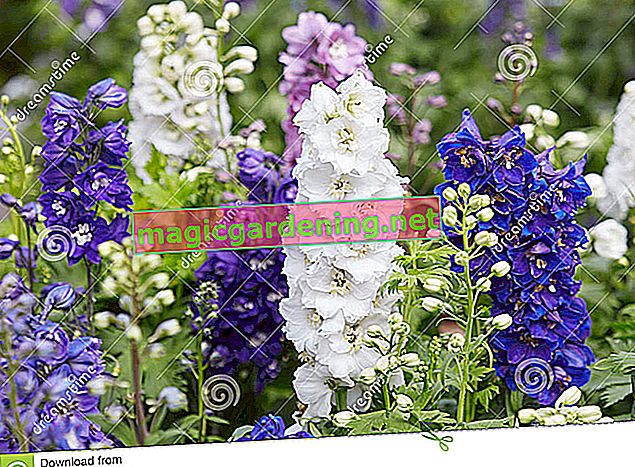
Lifespan depending on the variety
The specific lifespan of the individual larkspurs depends on the specific type and variety. While the wild forms of the field and arable delphinium and their garden forms are usually only annual, the following applies to all other cultivated forms: the taller the perennial, the more durable it is. De facto this means:
- Larkspurs of the Belladonna varieties are perennial, but not too long-lived.
- Delphinium belladonna can live up to five years.
- The very tall Elatum varieties can easily reach an age of at least five to ten years.
- The more sensitive Pacific Larkspurs, on the other hand, usually don't get older than two to three years.
also read
- Sow and plant delphinium
- Delphinium can hibernate outdoors
- Larkspur - Cutting back extends the flowering time
Propagate larkspurs in good time
The knowledge about the lifespan of a delphinium leads to a timely reproduction of the perennial, which can be done either via seeds or vegetatively. The perennial varieties can not only be multiplied by division, but also rejuvenated - in this way you extend the life span of your plants. Annual or biennial varieties, on the other hand, are easier to grow from seeds, which you can easily collect from the plant yourself.
Delphinium overwinters in the rhizome
All perennial knight spurs retreat into their rhizomes (ie into the main roots) after they have been cut back in autumn in order to hibernate there protected from external weather conditions. In spring, the plant sprouts from it again, whereby you can lure it out of the reserve with targeted fertilization and thus miss the right start push. It is sufficient to fertilize the delphinium in March with a good portion of mixed compost and horn shavings (€ 6.39 on Amazon *).
Cut back delphinium in autumn
To make it easier for the delphinium to hibernate, cut the plant back to just above the ground after any autumn flowering. If, on the other hand, parts of the plant are left in place, pathogens can nestle and spread.
Tips & Tricks
In addition to seeds and division, the delphinium can also be propagated via root cuttings, for which you select young shoots with a piece of root in early summer.








